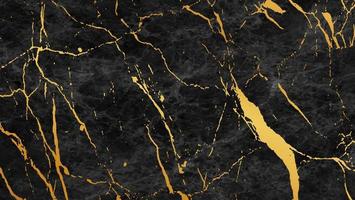
Blog
How do you polish natural black marble correctly?

Marble is a stone commonly used for countertops, tables, floors and fireplaces… Marble brings a natural beauty to your home, but it requires special care so that it does not get damaged, stained, or faded, knowing that the surface of marble is porous, which increases the possibility of damage or fading. Therefore, the question of how to polish natural marble and make it look good again?
In the following lines, useful tips for every housewife, related to polishing black marble and making it shine again.
جدول المحتويات
Steps involved in polishing black marble

Steps involved in polishing black marble
Polishing countertops and floors finished in black natural marble can help them regain their beautiful appearance. The following steps make the job easier:
- Before polishing marble, make sure the surface is clean and free of dust, dirt, and any stains. In general, cleaning marble requires precision to ensure that the surface is not damaged or stained, which means using a cloth, soft cloth, or sponge, a pH-neutral cleaner designed specifically for marble, warm water, and a dry cloth. Start by removing any dirt or dust from the marble surface, using a soft cloth, and then mix a small amount of a special marble cleaner with warm water. Before cleaning the marble surface, it is advisable to test the cleaning solution in a small, inconspicuous area to make sure it does not cause any discoloration or damage. Next, dip a sponge into the cleaning solution, squeeze out the excess liquid, and wipe the marble surfaces, gently, using light pressure, performing circular motions to avoid scratching the marble. Rinse the marble with clean water and dry.
- To polish marble, apply a small amount of polish to the surface of the marble, then use a soft cloth or pad to rub, following circular motions, to reach the desired shine, noting that dull marble needs to repeat the steps.
- After polishing, use a clean, damp cloth to remove any residue or excess polish from the surfaces.
- It is necessary to deposit marble surfaces, until they are completely dry, before walking on them, in the case of flooring, or using them in the case of countertops.
- To prevent marble from fading, wipe the stone as soon as any substance is spilled on it. Acidic or oily substances carry the highest risk, so they require immediate cleaning.
- Most marble surfaces will need to have a sealant applied every 6 months for protection. After the surfaces have been cleaned and thoroughly dried, apply the sealant evenly to each surface, distributing it with a clean cloth towel. Then, use a separate clean, dry cloth to remove any excess.
Factors responsible for black marble losing its luster
Black marble can lose its luster due to various factors, including natural wear and tear, dirt and dust accumulation, over time, foot traffic, and moving furniture, creating microscopic scratches on surfaces made from the natural material. The scratches scatter light and give the material a dull appearance.
On the other hand, marble, a calcium-based stone, may fade when applying acidic cleaners, such as lemon juice, distilled white vinegar or some other abrasive cleaning products or acidic solutions, or even scrubbing the stone, using rough cleaning pads: Lemon juice, white distilled vinegar or some other abrasive cleaning products or acidic solutions, or even scrubbing the stone, using rough cleaning pads, which can lead to abrasion and loss of shine. It is also important to note that excessive moisture causes marble to lose its shine, as water can seep into the porous surface of the marble, leading to discoloration or the formation of mineral deposits. Therefore, it is essential to clean your marble properly, as mentioned above.
